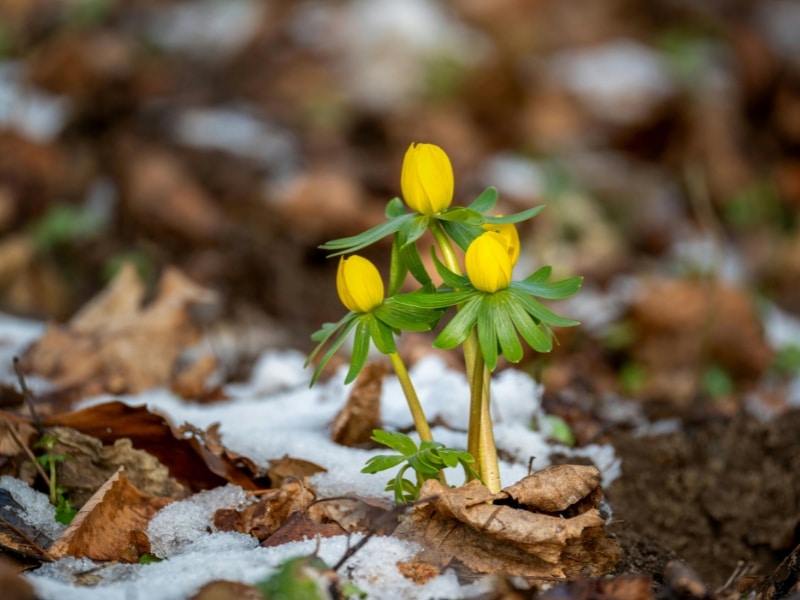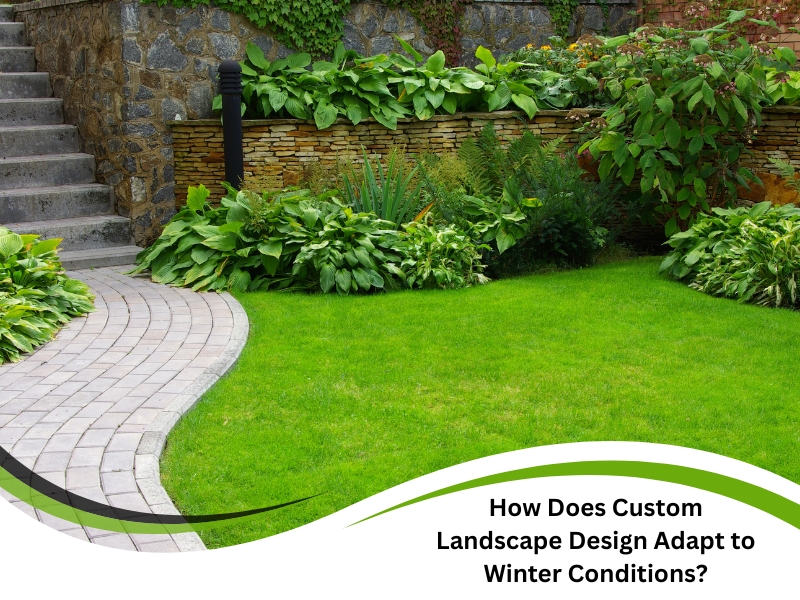Smart garden design isn’t a summer-only project. Cold months present unique challenges that many standard layouts struggle to handle. That’s why custom landscape design becomes essential in winter. It offers a flexible blueprint that tackles frost risk, soggy soil, and disappearing sun with precision. You’re not just planting differently — you’re reshaping your entire outdoor experience to thrive through seasonal extremes. By thinking beyond generic layouts, you create a yard that not only looks great but also functions beautifully throughout the year. This article explores how winter-focused customisation strengthens your garden’s look, feel, and performance in colder conditions.
What seasonal challenges affect custom landscape design in colder climates?
Winter’s not just a bit chilly — it reshapes how your outdoor space functions. Even the best custom landscape design can struggle if these seasonal shifts aren’t anticipated.
- Soil saturation: Heavy rain turns certain soils into sponges, limiting oxygen and stunting plant growth. Clay-heavy soil becomes waterlogged quickly and is slow to drain, placing stress on shallow-rooted plants and encouraging weed growth.
- Sunlight drop: Shorter days reduce natural light, affecting plant metabolism and overall garden vibrancy. Many plants enter dormancy earlier than expected, slowing down growth and reducing flower production.
- Wind exposure: With leaf cover gone, wind cuts through unprotected spaces, drying and damaging plants. Trellises or temporary windbreaks can reduce impact and protect key garden areas.
- Surface shifts: Frost cycles lift pavers, disturb mulch layers, and displace loosely set garden beds. This creates tripping hazards and damages paths or edging structures.
All of these issues can turn a beautiful landscape into a soggy mess. And while no design is immune, planning around these factors ensures resilience. You can also adopt climate-smart strategies for garden landscaping that consider local temperature fluctuations and water flow patterns.
Why does improper planning hinder winter landscape projects?
Skipping proper planning can leave your winter landscaping effort dead in the water. A stunning spring layout won’t cut it if it collapses when conditions shift.
- Pipe placement errors: Subsurface lines freeze, crack, or heave due to improper depth or insulation. An inconsistent water supply can damage irrigation systems and lead to bursts, potentially causing erosion or flooding.
- Pooling water: Hardscape zones, such as patios and walkways, can become slippery without effective grading or drainage. Standing water also attracts pests, such as mosquitoes and fungus gnats.
- Root system failure: Overcrowded planting ignores soil saturation levels, which can lead to long-term damage. Without space for roots to dry out and breathe, plants slowly deteriorate.
- Structural cracking: Decks, walls and edging shift when water freezes and expands under them. Expansion joints and water-tolerant sealants should be included to mitigate this risk.
Winter shows no mercy for overlooked details, and this is where efficient custom landscape design solutions for cold climates make a real difference. These plans integrate frost protection, grade control, and winter planting principles, ensuring your garden remains safe and stable throughout the winter.
Are frost and moisture risks undermining your custom winter garden design?
When frost bites and moisture lingers, it’s not just inconvenient — it’s destructive. You’ll notice discolouration, sagging, and bare spots if your layout isn’t built for it.
- Frost heave: Soil expands when water freezes, pushing plants out of position and cracking borders. This disrupts root systems, leading to poor spring performance.
- Waterlogging: Excessive rain smothers root systems, leading to fungal outbreaks and dieback. Raised beds with a good soil mix help manage water flow and keep roots healthy.
- Rot issues: Standing water weakens wooden features, such as raised beds, seating, and edging. Choosing hardwood or treated timber can minimise decay in wet zones.
- Foliage collapse: Delicate plants slump or snap after repeated overnight chills. Covering them with hessian or planting them near thermal masses, such as brick walls, can help reduce frost exposure and temperature fluctuations.
To prevent these issues, it pays to think ahead. Layered beds, good airflow, and frost-friendly plants all make a huge difference. For those seeking inspiration, consider custom design ideas for winter gardens, which will open your eyes to clever layouts and seasonal plant mixes that thrive and shine.

What winter-proof design features boost outdoor appeal?
Beauty doesn’t have to hibernate in winter. Custom winter landscaping adds shape and texture to your yard when greenery fades.
- Built-in seating: Fixed benches and nooks made from water-tolerant materials remain usable throughout the entire season. Consider natural stone or sealed timber to endure heavy rain and morning frost.
- Weather-resilient foliage: Plants like viburnum, daphne, and lomandra retain structure and colour. These selections also attract birds and pollinators that stay active in colder weather.
- Strategic lighting: Warm-toned LEDs along paths and walls give a soft, inviting look. Use timers or solar-powered fixtures to extend usability with minimal effort.
- Drain-smart pathways: Gravel, steppers, and permeable pavers avoid puddles and mud slicks. Elevated boardwalks are another excellent choice for consistently wet areas.
Designing for year-round interest is easier than you think, especially when you explore landscape design ideas for smaller spaces that rely on verticals, textures, and built forms. Compact areas become visual highlights rather than dead zones.
Is insulation or drainage more important in winter landscaping?
There’s always a balancing act. However, the answer depends on which one hits your region harder: the wet or the cold.
- Soil type matters: Clay-rich soils benefit more from drainage; sandy soils lose warmth and require insulation. Adding compost improves both outcomes and supports soil structure.
- Elevation impacts exposure: Raised areas lose heat faster and require insulation; low spots demand drainage. Terracing can help balance the extremes by breaking up slopes and creating a more gradual slope.
- Plant choice shifts needs: Frost-sensitive species require warm root zones, while water-tolerant ones prioritise drainage. Grouping plants by water needs ensures survival and simplifies care.
- Material behaviour varies: Timber warps in response to moisture; metal conducts cold — plan accordingly. Recycled materials, such as composite decking, offer durable, winter-proof alternatives.
When in doubt, start with drainage. A wet garden causes more headaches than a chilly one. Once the water is under control, add layers to protect plant roots and surfaces. Take a look at this winter landscaping features comparison:
Feature | Primary Benefit | Use When... | Materials to Use |
Raised Beds | Improved insulation | Growing frost-sensitive vegetables | Timber, stone, corrugated iron |
French Drains | Maximum drainage | Water pooling in low-lying areas | Gravel, perforated pipe |
Mulch Application | Thermal stability | Protecting roots and reducing water loss | Bark, straw, sugarcane mulch |
Gravel Pathways | Rain resilience | High foot traffic or slippery surfaces | Crushed granite, compacted rock |
Each of these solutions helps prevent damage and maintain garden integrity during prolonged winter wetness. Keep your features working, not wilting.
Final thoughts
Winter may seem like the off-season, but it’s the real test of your garden’s durability. Through thoughtful material selection, moisture control, and cold-tolerant plants, you can craft an outdoor space that doesn’t just survive — it thrives. Ready to reimagine your outdoor space this season? Discover how A Bargain Gardener helps tailor your ideal garden layout, incorporating subtle structural solutions and seasonal design strategies that are tailored to your space, climate, and goals.


